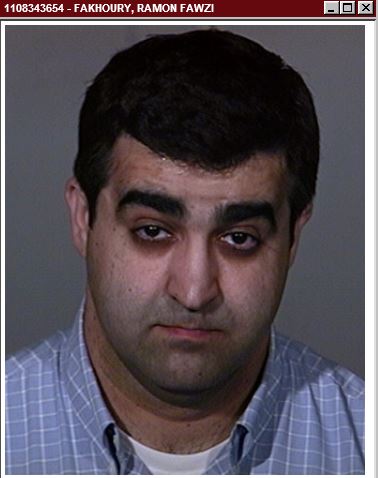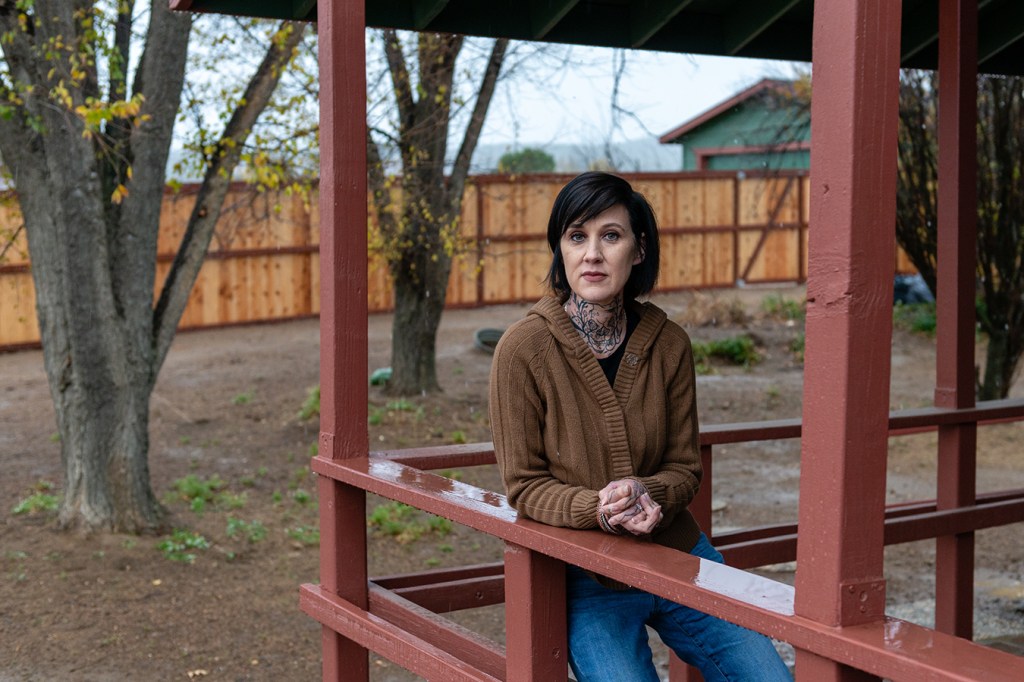The doctor instructed his patient to stand in front of him. He cupped her crotch and inserted his fingers into her vagina through her clothes, moving his hand repeatedly to her rectal area. Then he squeezed her breasts, according to a formal accusation filed by the Medical Board of California.
The patient, accompanied to the appointment by her 4-year-old granddaughter, asked why that was necessary to diagnose a urinary tract infection, according to the documents. He told her to let him do his job.
In three other cases, the board alleged that the family doctor, Ramon Fakhoury of California’s Inland Empire, touched patients’ genitals for no medical reason. In 2016, the board handed him 35 months of administrative probation, requiring him, among other things, to have a chaperone when treating females.
Fakhoury did not admit to the allegations, according to his attorney, and criminal charges against him were dropped. If he successfully completes probation next year, he’ll be able to practice without restriction.

The Medical Board of California put family physician Ramon Fakhoury on 35 months of probation after several patients alleged he had touched their genitals for no medical reason. Until he completes probation, he must have a chaperone present when treating female patients. He did not admit to the allegations. Previously, he faced felony sexual abuse-related charges, which were dismissed after a jury deadlocked. (Courtesy of the San Bernardino County Sheriff’s Department)
With a mission of patient protection and doctor rehabilitation — not punishment — California’s medical board and those in other states make decisions under laws and norms that can seem discordant in the #MeToo era.
California is often cited as one of the more rigorous states in overseeing doctors. But, according to the medical board, very few sexual misconduct complaints are reported to the board in the first place, historically under 200 a year. Even fewer result in a formal accusation against a doctor. And when discipline is found to be warranted — typically in fewer than 20 cases a year — the board tends toward leniency, sometimes granting a few years of probation even in instances of severe misconduct, according to a KHN analysis of medical board records.
More than a third of doctors sanctioned by California’s board in cases that alleged sexual misconduct received probation in the past 10 years — some more than once. The terms of probation — which is not a criminal court action but places conditions on a physician’s license — often required temporary chaperones, as well as psychotherapy and courses in “professional boundaries” and ethics. (Through probation, the medical board can only place conditions or restrictions on a doctor’s license in civil proceedings; it does not take criminal court actions.)
“They love giving second chances” to physicians, said Marian Hollingsworth of San Diego, a frequent critic of the California medical board. “It makes you wonder where their priorities are. … Their first loyalty is supposed to be patient safety and that doesn’t always happen.”
The recent, shocking reports about years of abuse by USA Gymnastics doctor Larry Nassar and University of Southern California gynecologist George Tyndall — as well as national exposés about physician misconduct by the Atlanta Journal-Constitution and the Associated Press —have only intensified concerns about whether sexual abuse is taken seriously enough in medicine.
Nassar, accused of abuse by scores of girls and women under the guise of medical treatment, is now serving what amounts to a life sentence. Prosecutors are considering criminal charges against Tyndall in more than 50 cases, and the state medical board has suspended his license while seeking revocation. He has denied the allegations.

Larry Nassar sits in court on Feb. 5, in Charlotte, Mich., before being sentenced for three counts of criminal sexual assault. Nassar, accused of abuse by scores of girls and women under the guise of medical treatment, is now serving what amounts to a life sentence. (Scott Olson/Getty Images)
And just last week, 17 women sued Columbia University and its affiliated hospitals, alleging that the facilities engaged in covering up decades of sexual abuse by one of its OB-GYNs.
Research has shown that many doctors who sexually exploit patients, like other perpetrators of abuse, don’t stop with one victim. They “perpetrate such behavior for years before being stopped,” said the authors of one study.
Against this backdrop, California Gov. Jerry Brown in September signed landmark patient protection legislation requiring doctors who are on probation for sexual and other serious misconduct to notify patients of their status and the terms under which they must practice. It will take effect next July. The bill had failed twice before.
“It’s time,” said the bill’s lead author, Sen. Jerry Hill (D-San Mateo). “The #Me Too movement has really made it very clear that there are individuals even in the most respected professions who abuse their authority.”
Even as sexual abuse complaints filed with the medical board rose significantly in the past year to coincide with the rise of #MeToo, board officials say they plan no major changes in how the board dispenses discipline in sexual misconduct cases.
The #MeToo movement “has not changed us,” said the board’s executive director, Kimberly Kirchmeyer. Cracking down on sexual misconduct has always been “one of the board’s top priorities,” she said.
Digging Into The Records
KHN examined all 135 cases of alleged sexual abuse investigated by the board that resulted in sanctions from July 2008 through June 2018. (The analysis did not include discipline based on proceedings in other states.)
More than a third of sanctions were for sexual misconduct with more than one victim, and the vast majority of alleged perpetrators were men accused of exploiting women.
Doctors’ licenses were revoked in 39 cases and voluntarily surrendered in 38. Several doctors received public reprimands — a minor sanction.
The largest share of sanctions — 49 cases, or more than a third — were for probation.
According to the board’s disciplinary guidelines, the minimum probation period is seven years for a doctor found to have engaged in sexual misconduct — whether it is a sexual relationship with a patient, sexualized touching during exams or inappropriate sexual conversation.
But those “minimums” were not applied in more than half of the probation cases, according to the KHN analysis. The guidelines allow exceptions based on “mitigating circumstances,” the age of cases, the quality of evidence and other factors.
Kirchmeyer noted that the board treats every case as unique and places a high value on a doctor’s remorse and acknowledgment of wrongdoing.
In eight cases, KHN found, a doctor sanctioned for sexual misconduct had previously been sanctioned for similar misconduct.
Dr. Patrick Mark Sutton, a Pasadena obstetrician-gynecologist, received probation twice — the first time for four years after investigators alleged sexual misconduct in 2002. In 2011, he was placed on probation again — this time for three years — following allegations that he improperly rubbed a patient’s thigh and engaged in inappropriate sexual conversation.
He denied all sexual misconduct allegations in 2002 and 2011, admitting only to medical record-keeping violations in both cases.
This September, after he had completed mandated ethics and “boundaries” courses, the medical board filed a new accusation against Sutton, saying that he had called a patient “hairy” and asked the patient, who was naked from the waist down under a drape and in stirrups exposing her genitals: “Do you enjoy orgasms? You are a very beautiful woman,” according to the documents. That case is pending.
Sutton’s lawyer, Gary Wittenberg, said in an emailed statement that “the allegations in the pending Accusation are untrue and we will prove that in court.”
In several cases, the board granted probation knowing the doctor had been convicted of misdemeanor criminal charges stemming from sexual abuse investigations.
Fakhoury, the Inland Empire doctor, had faced felony sexual abuse-related charges but was not convicted due to a hung jury, according to San Bernardino County Superior Court records.
His lawyer, Courtney Pilchman, told Kaiser Health News that the criminal charges were dismissed afterward and that the doctor “did not stipulate” to — or admit to — the medical board accusation.
By contrast, Ohio’s medical board, upon learning of California’s sanction, in 2012 revoked his state license.
The number of disciplinary actions taken over the decade is strikingly small given the size of California’s practicing physician population of more than 100,000. Alleged victims of sexual abuse by physicians are significantly less likely to come forward than sexual abuse victims in general, some research indicates.
However, numbers provided by the medical board suggest that many of the complaints that are filed — whether by victims themselves or other sources — do not result in formal accusations against doctors. From October 2013 through June 2018, 838 complaints were designated by the board as possible sexual misconduct. During that same period, 74 accusations were filed. (Multiple complaints could be filed about one doctor.)
Experts and lawyers familiar with the board offered various explanations: Some complaints may be false. Doctor sexual misconduct can be hard to prove by “clear and convincing evidence,” as required in medical board cases. Accused physicians often hire experienced lawyers who aggressively fight back, leading to delays and deals. Victims may decline to testify or present poorly as witnesses.
Some victims, for instance, have psychiatric disorders or believe that they were engaging in a “consensual” relationship, according to medical board documents.
Board staff have worked hard to treat alleged victims sensitively, Kirchmeyer said. Expert reviewers are instructed to read complaints as if the person is telling the truth, she said, and the board plans weeklong training sessions to help investigators work better with alleged victims and prepare them for testifying.
The cases often drag on. It can take years for victims to come forward in the first place — and more time for cases to wind their way through the state’s complex bureaucracy. Evidence can go stale.
“Physicians have to have due process,” Kirchmeyer said. “Anyone can make a complaint about anyone at any time.”

Tracy Lystra at her home in Aguanga, Calif. (Heidi de Marco/KHN)
‘Slap In My Face’
Facing what they see as an uphill battle, lawyers from the state Department of Justice, who handle administrative hearings, will sometimes pre-emptively recommend probation — even in serious sexual misconduct accusations — to avoid the possibility a doctor will get no sanction at all from a judge, said Laura Sweet, a former deputy director who retired in 2015.
Sweet, who worked for the medical board for 23 years, said the legal process focuses on the doctors and does not always give sufficient weight to the pain of alleged victims. “You’re sending a message that’s potentially minimizing what the victim endured.”
That’s how Tracy Lystra sees it, too. In 2013, Lystra sued her Fallbrook, Calif., OB-GYN, Anthony S. Bianchi, alleging that he harassed her with comments about her body and how she aroused him, whispering into her ear as she lay on a gurney before surgery that she looked like a “sexy librarian.” She said the case, which also alleged medical negligence, was settled for $150,000 in 2016. Bianchi, who could not be reached for comment, denied the allegations in court documents.
Through her attorney, Lystra filed a complaint to the medical board shortly after settling with Bianchi. This past July, she received a letter from the board saying it would not be able “establish grounds for discipline” against Bianchi in her case, “considering all the evidence and mitigating factors.”
Ultimately, she learned that the board had received complaints from other women.
In 2014, Bianchi had been put on five years’ probation after the board accused him of making inappropriate sexual remarks to two patients, telling one he dreamed of having oral sex with her and couldn’t stop staring at her breasts. After learning of these cases, another woman came forward, alleging Bianchi several years earlier had blocked his office door with a chair, inserted his fingers into her vagina, exposed his penis and asked her for sex.
The board’s penalty was another five years’ probation. But the two probation terms overlap — and Bianchi, who agreed not to contest the allegations as part of the settlements in each case, could go back to work as an OB-GYN without restrictions in 2021. In the meantime, he is not allowed to treat female patients.
Learning that Bianchi received such a light punishment — and that the board would not take action on her own complaint — was crushing, Lystra said, noting that it had been so difficult to get anyone, including her family, to believe her.
“I really wanted him stopped. It was so disappointing when medical board responded the way it did,” Lystra said.“It was a slap in my face.”
Methodology
In its analysis, KHN requested every sanction for sexual misconduct issued by the Medical Board of California over the past 10 years, the name of each doctor involved and his or her license number. The board responded with 181 actions against 175 doctors from fiscal year 2008-09, beginning in July, through fiscal year 2017-2018, ending in June. (The records were designated by the board as primarily for sexual misconduct but often included other allegations.)
KHN used the board’s document lookup search on its website to review its available public records on each doctor. KHN mentioned sanctions outside the 10-year period when records showed the doctors were repeat offenders.
The analysis excluded cases in which the board took action in response to sanctions issued by other states’ medical boards for sexual misconduct outside California.
For each sanction, KHN determined the number of alleged victims identified in the board’s accusations, their gender, type of sanction, length and terms of probation, type of alleged sexual misconduct and whether the board took note of any previous or concurrent criminal proceedings.
KHN also requested the number of complaints the board received alleging sexual misconduct, and how many formal accusations the board filed each year after the allegations were investigated and merited disciplinary action. The board did not have data for all 10 years, but provided the number of complaints received and the number of accusations filed from October 2013 through the end of the 2017-18 fiscal year.
KFF Health News' coverage of these topics is supported by California Health Care Foundation and The David and Lucile Packard Foundation
This story was produced by KFF Health News, which publishes California Healthline, an editorially independent service of the California Health Care Foundation.







